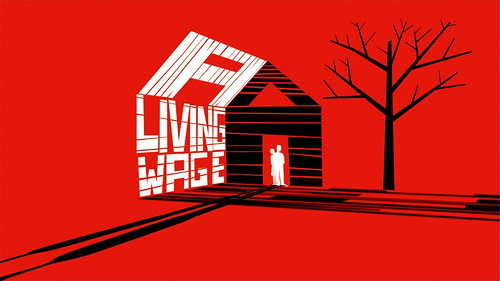How much do working parents need to earn to be able to afford to live in our community? Reports released yesterday provide the answer for the three largest regional districts in B.C., home to two-thirds of this province’s population: $19.62/hour in Metro Vancouver, $18.73/hour in Greater Victoria and $16.37/hour in the Fraser Valley.
The living wage invites all of us to think about the actual costs of raising a family in our communities: rent, child-care fees, food and transportation costs, for example. And when we look at the numbers, we find that the costs of the basics is rising considerably faster than general inflation measured by the Consumer Price Index (CPI). The Vancouver living wage rose by 48 cents since last year, which is 2.5 per cent or almost double Vancouver’s CPI increase of 1.3 per cent.
The living wage reports released today reveal a big gap between the low wages a number of us earn and the real costs of raising a family. Child poverty is a serious concern in our cities, and it’s not just a problem for single-parent families. The numbers speak for themselves (all from Statistics Canada’s Cansim table 202-0802):
– 13.8 per cent of Metro Vancouver children live in poverty (based on Statistics Canada’s after-tax LICO). Only St. John’s in Newfoundland has a higher child poverty rate of the 20 largest Canadian cities surveyed by Statistics Canada. The average Canadian child poverty rate is 8.2 per cent.
– 11.6 per cent of Metro Vancouver children in 2-parent families live in poverty. This is double the Canadian average of 5.7 per cent, and considerably higher than the city with the second-worst 2-parent-family child poverty record, London, Ontario with 9.3 per cent.
Many more families have incomes above the poverty line threshold but are struggling to cover basic expenses. In Vancouver, we estimate that a 2-parent family with 2 children needs an income of $64,940 after taxes to cover their costs of living. Taking into account all the federal and B.C. income tax, CPP and EI premiums and all credits and subsidies available for families, we estimate that the family needs to earn $71,400. With both parents working 35 hour/week year-round, this works out to an hourly wage of $19.62.
About 41 per cent of Vancouver’s 2-parent families with 2 children had incomes of less than $75,000 before tax in 2010 (according to Statistics Canada data in Cansim table 111-0013).
How did those earning less than the living wage manage? Many take on debt, which is one reason why household debt is continuing to grow. In many cases, low-wage families just do without. They live in constant financial stress, they don’t have the means to fully participate in the civic and cultural lives of their communities and their children are at a higher risk of not being ready to learn when they get to school.
Jobs make a good political slogan, but the reality is that working poverty remains a problem Canada and it’s time we started paying attention to wages too, not just jobs. Skills training can only take us so far.
As Michael McCarthy Flynn, the Organizer of the Living Wage for Families Campaign reminds us (in this great opinion piece):
“the creation of well-paying jobs also brings with it an increase in low-paid service-sector jobs. Every time a new hospital, university, mining or technology firm opens it doors, leading to the creation of many well-paid jobs, it also leads to the attendant creation of a number of low-paying jobs that are usually contracted out to service these institutions’ auxiliary needs, such as security, catering, cleaning or even general administration.”
At the end of the day, we can’t all be doctors or engineers, we can’t even all be plumbers and electricians. Even the highest-skilled knowledge economy needs line cooks, cleaners, security guards, servers, retail store clerks. What does it mean to have these jobs pay wages far below the costs of living in our communities?
The good news is that both businesses and governments can do a lot to make things better. Large employers can commit to paying their staff the living wage for their community. Thirty-five employers in Metro Vancouver have already done that.
Importantly, the living wage can be achieved through a combination of cash and benefits: paying for workers’ MSP premiums, providing subsidized transit or extended health benefits reduce the amount that employers need to pay to reach the living wage family income (for more information, see this handy online calculator).
Governments can get involved both as an employer — by paying all government workers a living wage — and as a service provider. Child care is the second-largest family expense for a Vancouver family with two children and reducing the costs of child care can go a long way. The $10/day Child Care Plan, for example, would reduce the Vancouver living wage by $3.36/hour for both parents to $16.26/hour.
Affordable housing, more convenient public transportation options, accessible post-secondary education and skills training, more generous child benefits — all these policies can greatly improve quality of life for working families who earn low wages. To see how much different government policies will reduce the living wage, see this online calculator.
Image: Siân for London/flickr



